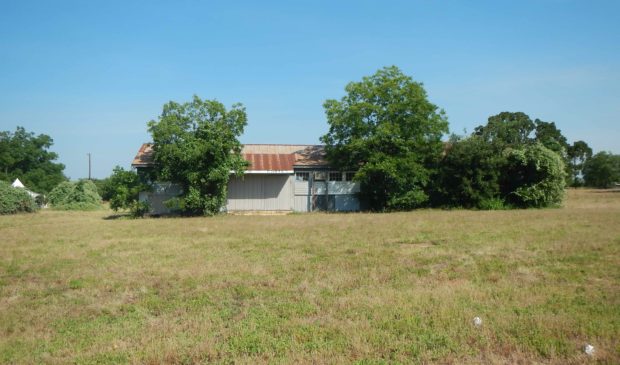City estimate: Preserving Montopolis Negro School would cost $5.7M
Wednesday, September 19, 2018 by
Jack Craver The city of Austin is beginning the process of using eminent domain to seize the 1-acre plot at 500 Montopolis Ave., home of an 83-year-old building that was once the Montopolis Negro School. The structure is a rare vestige of the system of “Rural Negro Schools” operated by Travis County prior to desegregation.
In June, City Council approved a resolution authorizing city staff to bring an eminent domain suit to acquire the land for $362,000. In a memo to Council last week, the Office of Real Estate Services said that a “Special Commissioners Hearing will be convened in the next few months” to decide whether that is a fair figure.
The owner of the property is Austin Stowell, founder of KEEP Real Estate, who bought the parcel in 2015 with the intention of developing the land, adding six single-family homes, a restaurant or retail space, and an office building.
Stowell originally proposed demolishing the schoolhouse, which had been vacant at that time for more than three decades, since a church congregation that had been using the property disbanded. However, in response to calls to preserve the schoolhouse, Stowell offered to repair and maintain the building as part of his development, perhaps as a privately operated banquet hall.
However, some Council members and historic preservation advocates have greater ambitions for the schoolhouse. They want it to become a city-owned museum.
Stowell said that fighting the eminent domain case isn’t realistic, guessing that it could take years and cost him hundreds of thousands of dollars. But he is confident that the special commissioners will decide that he is owed far more than the “ridiculous” offer he got from the city.
“If you can buy an acre of property in Austin, Texas, for $362,000, then I’ve got some oceanfront property in Arizona to sell you,” he quipped. He acknowledged that he had purchased the parcel for less, but noted that land values had since increased and that the price does not account for the opportunity costs he has undertaken by buying a piece of property that he will not be able to develop.
The Parks and Recreation Department last month estimated that it would cost $5.78 million for the city to turn the structure into a functioning museum. It estimated that it would cost the city about $193,000 a year to operate the museum afterward.
Council Member Ora Houston, who grew up attending segregated schools in East Austin, has been a vocal proponent of preserving the Montopolis building. In an email to the Austin Monitor, she said that she was open to Stowell’s proposal to preserve the building. She acknowledged that there might not be the funding or demand necessary to support a full-time public museum.
“Throughout the discussion of the property, I pointed out that the Parks and Recreation Department has difficulty funding the maintenance and operation of the current parks and historic structures in their portfolio,” she noted.
Mayor Pro Tem Kathie Tovo said on Tuesday that she would like to see the building become a museum and a public space. She said that while funding is still up in the air, she is hopeful that the city will be able to use some revenue from the Hotel Occupancy Tax. Last year, Tovo successfully pushed for Council to reallocate millions of dollars in HOT revenue from the Austin Convention Center and Visit Austin (formerly the Austin Convention and Visitors Bureau) to historic preservation efforts.
The use of HOT revenue is strictly limited by state law. The funds can only be used in ways that benefit tourism and the hotel and convention industry and the majority must be used either on supporting the convention center or marketing the city as a tourist destination. Only a small portion can be used on arts or historic preservation. State law states that historic preservation efforts are only eligible for HOT funds if they are likely to be visited by convention attendees.
Stowell, meanwhile, said he doesn’t understand why his property, which sits between Roy G. Guerrero Colorado River Park and U.S. Highway 183, would be an appropriate location for a museum. He noted that there were 41 other rural negro schools but said he has seen no evidence that city staff has sought to find out how many, if any, of them are still around.
“(I)f others are standing, will we also be requesting these become museums?” he asked. “Should the city file eminent domain on the Historic Victory Grill or on Threadgill’s? Both are critical historic properties in the fabric of the culture of Austin – should they become museums?”
Download (PDF, 214KB)
Photo by Fred McGhee.
The Austin Monitor’s work is made possible by donations from the community. Though our reporting covers donors from time to time, we are careful to keep business and editorial efforts separate while maintaining transparency. A complete list of donors is available here, and our code of ethics is explained here.
You're a community leader
And we’re honored you look to us for serious, in-depth news. You know a strong community needs local and dedicated watchdog reporting. We’re here for you and that won’t change. Now will you take the powerful next step and support our nonprofit news organization?











